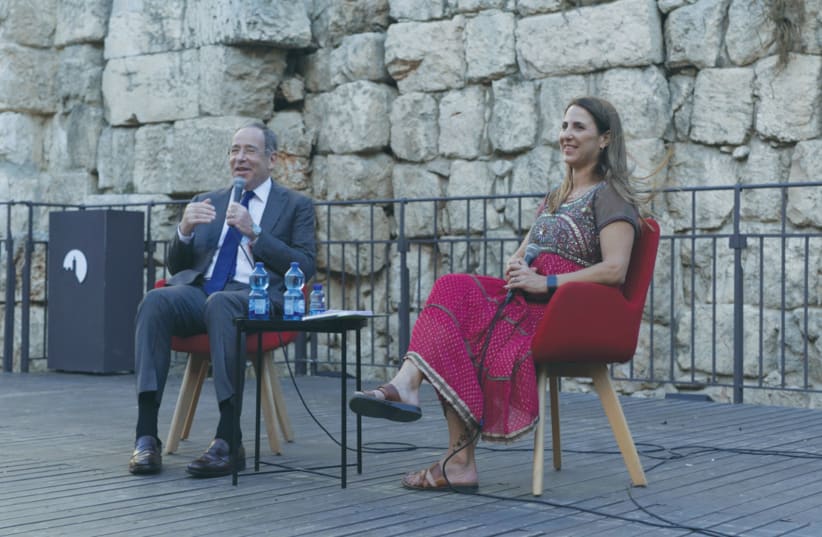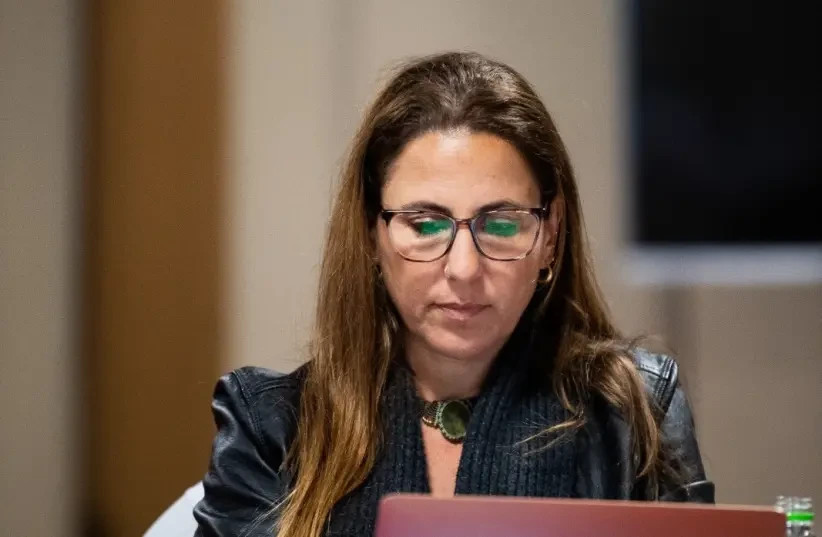In many ways, it makes perfect sense that after more than 25 years of writing hard-hitting fact-based news about Israel for an array of media outlets – including The Jerusalem Post – I decided to turn to the more pliable world of fiction. In fiction, you not only have the power to take a deep dive into divisive and complicated topics, but you have the ability to appeal to readers’ hearts as well as their minds to offer alternative outcomes that show the world through a more hopeful and sometimes even more realistic lens.
That reality could not have been captured more perfectly than on the night I held my official launch for Parallel Lines, my debut novel published last month by Black Rose Writing. In the company of US Ambassador to Israel Tom Nides, I discussed the divisions and tensions between the city’s distinctly separate “tribes,” which forms the basis of my book’s story. Then, as if life was imitating art, just at that moment a young Palestinian woman attempted to carry out a terrorist attack on the light rail train line less than a kilometer away.
Parallel Lines is set in the city during a period of time Israelis refer to as the “stabbing intifada,” which saw an uptick in stabbings, shootings, and vehicular attacks by Palestinians against Israelis. As one attack followed another, the already tense city became an even jumpier and more divided place.
What is the story about?
The fictional story is told from the perspective of three female protagonists – Tamar, a secular Israeli Jew, Nour, a Palestinian Muslim east Jerusalemite, and Rivki, an ultra-Orthodox Jew. These three young women are the same age and live less than a kilometer apart in the city’s northern neighborhoods, but just like in reality, their stories progress in “parallel lines.” They never have the chance to meet or interact. Instead, they pass each other by like ghosts; on public transport and in other communal settings such as Hadassah Hospital.
When first I sat down to write Parallel Lines, I had been working as The Washington Post’s local correspondent for more than five years. Through that period, I traversed both Israel and the Palestinian territories, meeting people from all different communities and hearing their stories – and their different versions of the truth – as I covered some of the more volatile and painful events taking place.
As the stories I heard and the experiences I had piled up, I reformatted and repurposed the details left over from my news stories for my novel. I already had a great deal of material, but I also knew that I needed more. I had many questions that needed answering, such as how this decades-old intractable conflict impacts young people growing up in Jerusalem, how it shapes their views, and how they view the other groups living with them but separate from them.
I also wanted to know if there was a way for a person living inside such a pressure cooker to stand up and say “No, this is not right,” was there a way for young people to go against the grain when being a teenager is all about peer pressure?
To initially answer those questions, I turned to my then-teenage daughter, Gefen, who at the time was a student in the Nisui School, which sits right in the center of Jerusalem. I sat with her – and her classmates – to hear their experiences and to understand how they were internalizing the events. I was happy to hear that they rejected the ever-so-easy approach of blaming an entire group of people for the acts of individuals. Rather, thanks to some great educators, they began to understand the complications and nuances of the place where they were growing up.
For the other two characters, Nour and Rivki, I carried out equal, if not more, research. I met with multiple young Palestinian-Muslim women from east Jerusalem to create Nour and I also spent time with young haredi women – as well as their mothers – in building the complex and forever questioning persona of Rivki.
On the surface, the experience of each “tribe” seemed quite different, but what struck me the most were the similarities. Teenage girls everywhere, it seems, share the same curiosity (and anxiety) about the world and often have the same questions about their place in it.
I heard from the young women how much they valued education as a way to improve their lives, as well as the lives of those around them.
In the Arab neighborhoods of east Jerusalem, where identity is a complex puzzle, some of the people I spoke to were studying for both the Israeli and Palestinian curriculums to maximize their higher education options. Many had dreams of working in the medical field and saw education as a possible solution to the conflict.
Among the haredi women, education was also a premium. All understood that by training for a profession – teaching, bookkeeping, even computer science – they would be able to provide a better life for their future families.
As journalists, we often only focus on the loudest, most extreme voices, sentiments, and actions. We pay attention to the most drastic events because that is what makes powerful headlines and draws in news readers, but researching Parallel Lines, I found the opposite: The majority of young people in Jerusalem, especially women, do not want to hate, they just want to live, learn, and improve their lives – although not necessarily together (let’s not get carried away).
In one of the final chapters of the book, Tamar sums up this sentiment as she considers the different communities that make up her city.
“Suddenly, Tamar realized that beneath all the external make-up, clothes, and hats, people were all the same, really. Even here, in a place that was so insular, so impenetrable, there was still a human side. Haredim were just like any of the other Jerusalem tribes. Jewish or Muslim. Israeli or Palestinian. Religious or secular. Each person was born more or less the same. It was what happened to them afterward, who their parents were, where they lived, where they grew up, what they were taught about life, culture, religion, that made them different – like the strokes of a paintbrush on a white canvas.”
I truly hope that Parallel Lines will not only open readers’ eyes to the pressures and challenges young people face growing up in Jerusalem but will also offer the sense that despite the obvious differences and divisions, there is also some common ground.
Ruth Marks Eglash is an award-winning journalist based in Israel. She spent eight years as the Israel-Palestine correspondent for The Washington Post and 13 years as a senior editor and reporter at The Jerusalem Post. Currently, she is the senior correspondent for Jewish Insider and freelances for an array of international media outlets.

